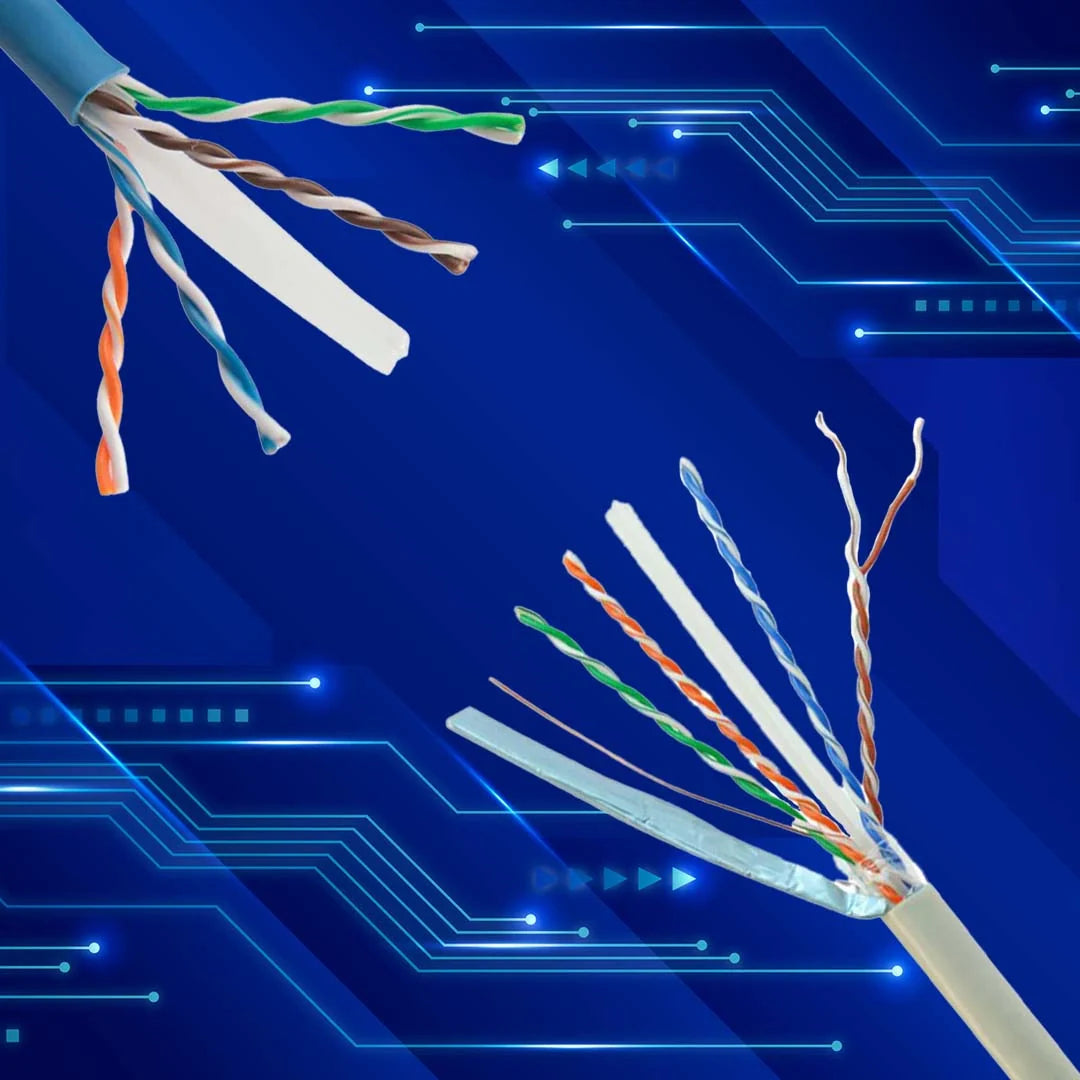You have no items in your shopping cart.

The choice of cabling can make a significant difference. Among the myriad of options available, Cat6 and Cat6a cables stand out as two of the most widely used and debated choices. These cables, while similar in name and appearance, have distinct differences that can impact network performance and reliability. In this article, we'll delve into the intricacies of Cat6 and Cat6a cables, exploring their characteristics, advantages, and applications, helping you make an informed decision for your networking needs.
The Category 6, is a standardized twisted pair cable that is designed to support Ethernet at speeds of up to 10 gigabits per second (Gbps) over short distances of up to 55 meters. It was introduced as an improvement over its predecessor, Cat5e (Category 5e), offering higher bandwidth and better performance. Cat6 cables feature tighter twists in the wire pairs, which reduce crosstalk and interference, resulting in clearer transmission signals.
Enhanced Performance: This cables provide higher performance compared to Cat5e, making them suitable for demanding applications such as video streaming, online gaming, and large file transfers.
Future-Proofing: With support for higher bandwidth, Cat6 cables are considered more future-proof, capable of accommodating advancements in networking technology for years to come.
Improved Crosstalk Reduction: The tighter twists in Cat6 cables minimize crosstalk, ensuring more reliable data transmission, especially in environments with high interference.
Category 6a represents an advancement over Cat6, offering even higher performance and reliability. The 'a' in Cat6a stands for augmented, indicating that it is augmented or improved compared to its predecessor. Cat6a cables support data transmission speeds of up to 10 Gbps over longer distances of up to 100 meters, making them suitable for use in larger networks and data centers.
Higher Bandwidth: Cat6a cables support higher bandwidth compared to Cat6, allowing for faster data transmission and improved network performance.
Extended Reach: With support for longer distances, Cat6a cables can cover larger areas without experiencing signal degradation, making them ideal for enterprise-level networks and infrastructure.
Improved Shielding: Cat6a cables often feature better shielding, such as foiled twisted pairs (FTP) or shielded twisted pairs (STP), which provide enhanced protection against electromagnetic interference (EMI) and external noise.
While both Cat6 and Cat6a cables offer high-speed networking capabilities, they differ in several key aspects:
Bandwidth and Speed: Cat6 cables support data transmission speeds of up to 10 Gbps over short distances, whereas Cat6a cables maintain this speed over longer distances of up to 100 meters. Additionally, Cat6a cables support higher bandwidth, making them more suitable for high-density environments and applications requiring greater throughput.
Cost: Cat6 cables are generally less expensive than Cat6a cables. However, the price difference may vary depending on factors such as brand, length, and shielding. For budget-conscious projects with shorter cable runs, Cat6 cables may be a more cost-effective option.
Installation Considerations: Due to their thicker gauge and potentially larger diameter, Cat6a cables may be more challenging to install compared to Cat6 cables. Additionally, Cat6a cables may require larger cable management pathways and connectors to accommodate their size and bandwidth requirements.
Future-Proofing: While Cat6 cables provide sufficient performance for many current applications, Cat6a cables offer greater future-proofing, ensuring compatibility with emerging technologies and network demands. Investing in Cat6a infrastructure may save costs in the long run by reducing the need for upgrades or replacements as network requirements evolve.
Both Cat6 and Cat6a cables find widespread use in various networking environments, including:
Enterprise Networks: Cat6a cables are commonly deployed in enterprise networks, data centers, and server rooms where high-speed connectivity and reliability are essential for supporting mission-critical applications and services.
Small to Medium-sized Businesses (SMBs): Cat6 cables are often preferred in SMB environments due to their balance of performance and cost-effectiveness. They provide sufficient bandwidth for typical office applications while remaining within budget constraints.
Residential Networking: Both Cat6 and Cat6a cables can be used for residential networking, providing reliable connectivity for home offices, multimedia streaming, and online gaming. Cat6 cables may be sufficient for most residential applications, while Cat6a cables offer future-proofing for bandwidth-intensive activities.
The decision between Cat6 and Cat6a cables depends on various factors, including the specific requirements of the network, budget considerations, and the expected lifespan of the infrastructure. For small to medium-sized networks where Gigabit Ethernet suffices, Cat6 cables may offer a cost-effective solution without compromising performance. However, for larger networks or environments where future scalability and higher data rates are essential, investing in Cat6a infrastructure can provide long-term benefits and ensure compatibility with upcoming networking standards.
It's essential to conduct a thorough assessment of the network requirements, taking into account factors such as the distance of cable runs, potential sources of interference, and the expected data transfer speeds. Consulting with network professionals or experienced technicians can help in making informed decisions and selecting the most suitable cable type for the intended application.
In the Cat6 vs. Cat6a debate, the choice ultimately depends on your specific networking requirements, budget considerations, and future-proofing needs. Cat6 cables offer excellent performance and cost-effectiveness for many applications, while Cat6a cables (STP) provide higher bandwidth and extended reach, making them suitable for more demanding environments. By understanding the differences between these cables and evaluating your network's needs, you can make an informed decision that ensures optimal performance and reliability for years to come. Whether you opt for Cat6 or Cat6a, both choices represent advancements in networking technology that pave the way for faster, more efficient data transmission in the digital age.
By understanding the differences between Cat6 and Cat6a cables, network administrators and IT professionals can make informed decisions when planning, designing, and implementing network infrastructures, ensuring optimal performance and longevity in today's fast-paced digital landscape. Whether it's for residential, commercial, or industrial use, choosing the right cable type is crucial for building efficient and reliable networks that meet the demands of modern connectivity.
